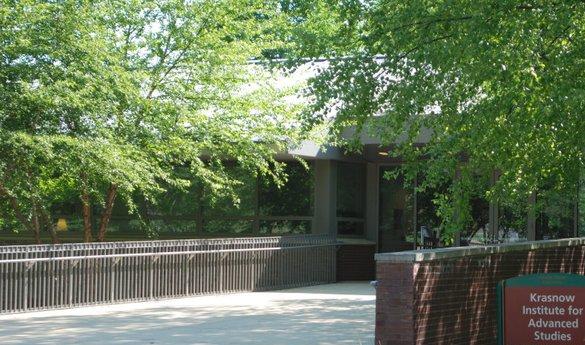Krasnow Institute likely to play role in Obama brain initiative
On April 2, President Barack Obama proposed to Congress to invest $100 million in the BRAIN Initiative.
BRAIN, which stands for Brain Research through Advancing Innovative Neurotechnologies, is meant to map the human brain and to create technology that can record brain electrical activity. The goal of the initiative is to find cures for brain conditions like Alzheimer’s disease and autism.
If approved, George Mason University’s Krasnow Institute for Advanced Study is likely to play a major role in Obama’s BRAIN Initiative.
The Krasnow Institute not only houses Mason’s departments of molecular neuroscience and computational social sciences, it also conducts research in neurobiology, cognitive psychology and computer science.
“Our folks get money to perform research on neuroscience, from the National Institutes of Health, from the National Science Foundation, from the Department of Defense, and what we do here is we conduct work, a lot of work, on neurobiology to try and find cures for things like Parkinson’s disease and Alzheimer’s disease,” said Dr. James Olds, director and chief academic unit officer at the Krasnow Institute. “That’s what we get money for. So we are among the very best at that and therefore if the president is proposing to Congress to put more money in this area, it would stand to reason that we will do pretty well.”
The Krasnow has had ongoing discussions with the White House since President Obama’s first term in office. Representatives from Krasnow have both visited the White House and have been visited by White House officials.
“I would like to think that Krasnow folks played an important if not germinal role in the President’s BRAIN project,” Olds said.
Not only is the BRAIN Initiative an opportunity for Mason, Olds said that reverse engineering could benefit the United States economy. Brain diseases like Alzheimer’s and Parkinson’s are very expensive to treat. Being able to cure them would save both patients and the government in medical expenses.
The BRAIN initiative could also have benefits outside of medical treatment. Learning more about the human brain could reveal ways of making planes and cars more automated and safer.
“So think about Google’s autonomous car, in the Silicon Valley, the car that drives around the streets of San Francisco without a driver, think of that on steroids,” Olds said. “Think of all the cars on [Interstate] 66 being autonomous, having their own brains and being able to talk to one another so you avoid any crashes whatsoever. That would be pretty cool.”
Olds says that he is excited for the possibilities of the initiative, and looks forward to the research.
“By the way your brain [works] for the power cost of a 20-watt light bulb… The really big super computers that we have in the U.S. use as much power as a small city. Your brain is more powerful than them and it uses the power of a 20-watt light bulb. So it’s not only more powerful, it’s incredibly efficient, we need to learn how that works.”

